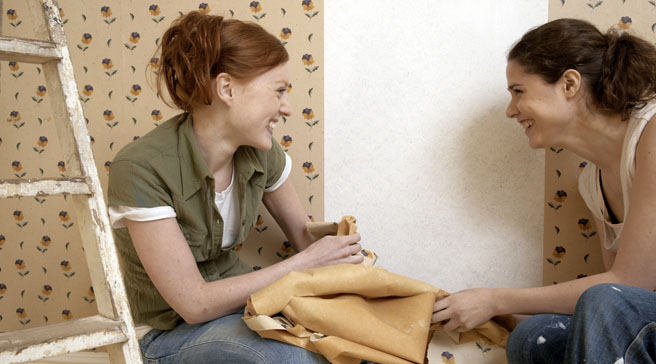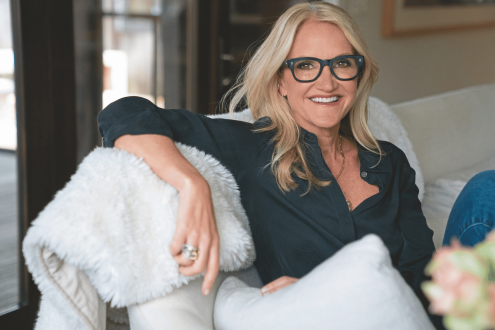How to make your house a home
Creating the perfect home means different things to different people, but for most of us, our domestic surroundings are where we can truly express ourselves. Psychologies explores how we create an emotional connection with bricks and mortar. By Kara O’Reilly

What makes a house a home? A straw poll of friends threw up similar themes: ‘it holds all my favourite things and my favourite person in one place’, ‘it’s about having cool, smooth sheets but also feeling free to make a mess’, ‘it’s the place I retreat to for peace from the frenetic, bossy outside world’, ‘it’s where I can spend the whole day in my pyjamas watching Mad Men, if I so choose’.
It seems that for most of us, creating a home is less about the building itself, its look or the area it is in, and more about the emotional connection and sense of comfort we’re able to create behind closed doors. This notion of private space is key to our sense of wellbeing and self-expression, believes Simon Moore, environmental psychologist at London Metropolitan University. ‘Personal space allows thinking space,’ he says. ‘It’s a good thing we don’t know what goes on behind closed doors. It allows people to do what they want and truly to be themselves – whether that’s vacuuming naked or playing back-to-back video games.’
And while the property you live in might be far from your ideal, even design experts agree that making a house a feel-good space is not about it being worthy of an interiors magazine, but ensuring it reflects who we are and how we live our lives. You can live in student digs or a luxurious penthouse, but it won’t be your own unless you are aware of your emotional response to your surroundings.
‘Some people are very sensitive to visuals, so when things are out of place, it can affect them almost as if they have been slapped in the face,’ says psychologist Averil Leimon.
Other people might be more sensitive to sound or harsh lighting or room temperature, yet most of us never take the time to figure out what impact our surroundings are having on us. ‘You need to work out what kind of person you are and what matters to you,’ says Leimon. ‘Is it having a peaceful place to sit? Is it having somewhere you can listen to music? What about the smell? Are you a tactile person? If so, what textures do you prefer?’
Belle Robinson, co-owner of Jigsaw and lifestyle emporium The Shop at Bluebird, agrees. ‘When creating a home, you should be ruled by your heart, not your head,’ she says. ‘If you love something, it will make you happy, which will create a warm atmosphere. My motto is, “Don’t be afraid of clutter” – what is clutter to one person can be another’s life story.’
At its core, the idea of what makes a house a home is rather primitive. ‘The notion of “home” is about the place you feel safe and where you feel connected to other people you like,’ says psychologist Linda Papadopoulos. ‘From an evolutionary point of view, it was about keeping warm and safe and having somewhere to gather and to bring up a family. You can add to that the fact that we are socialised into our expectations of what home means – many of our significant memories are now created around our homes.’
As the memory bank fills, our homes should subtly evolve over time to reflect the different stages of our development, or that of a family as it grows – and how we use our house will change accordingly. ‘Our personalities aren’t fixed – we’re changing all the time, and it makes no sense, from a psychological point of view, to stay static. Your surroundings should reflect that,’ says Moore. ‘People can get into a routine about things: having a favourite chair, or their side of the bed, or a certain spot on the sofa. It can be good to shake these things up, so they don’t become too habitual. Rearranging and redecorating a home is no bad thing – change can be good and stimulating.’
What we do and how we behave outside the home can also influence how we feel within it. ‘In an ideal life, we would have a total balance between work, family and socialising,’ says Leimon. ‘We would leave our house with joy, and return to it with joy at the end of the day. Sadly, that’s not what everyone experiences. People can be bent out of shape by the constant expectations and pressures of their work and social lives. So, home is the one place where we can be off duty.’
In the end, if you want your home to make you happy, it’s not necessarily about hiring an architect or investing in the show-off designer art and gadgets that you covet. It’s simply about your living space reflecting the essence of the person you are. Trevor Naylor, author of the anti-makeover culture book Living Normally – Where Life Comes Before Style, puts it this way: ‘A show-home lifestyle is impossible for most of us. When you live normally, it’s life that’s the key. The rest is just stuff.’









